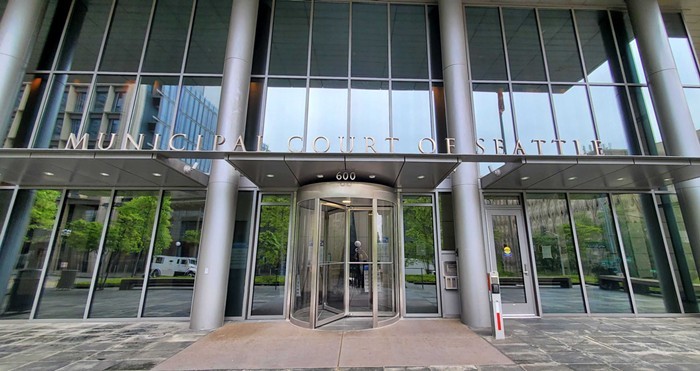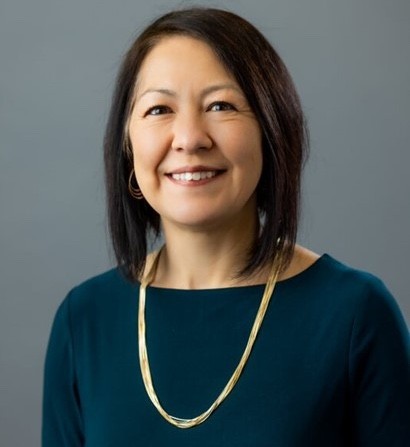Gordon Edelstein's tenure as artistic director at A Contemporary Theatre (ACT) ended in June (he's gone to the Long Wharf Theatre in New Haven); Dale Merrill, the artistic director of Spectrum Dance, left to accept a professorship at Chapman University in Orange County; Pratt Fine Arts Center's interim managing director, Sarah Pasti, left Seattle to participate in the arts renaissance in Beacon, New York, where the Dia Foundation is opening a new contemporary art museum in a renovated factory. The Kirkland Arts Center's executive director, Elizabeth Umbanhowar, left to pursue her interests in art and the environment; Barbara Johns at Pilchuck left for reasons described to the Seattle Times as "a matter of principle"; and the Seward Park Art Studio's executive director left for reasons I was unable to learn. ("I can hear you typing," said the woman who answered the phone, "and I don't want to be quoted. The lawyer said not to say anything.") And Susan Baird Trapnell, the Seattle Arts Commission's tireless executive director, left earlier this year for the Guthrie Theater in Minneapolis.
Then last week two executive directors at major arts organizations stepped down: Linda Bowers, from her 11-year stint at the head of Hedgebrook, the Whidbey Island writers residence, and Greg Robinson, from the capital campaign at Pratt. Bowers is simply looking for a change of scene; "I'm an old dog," she told me. "I've been here twice as long as I intended."
Why are all the arts administrators leaving, and leaving town? After making dozens of phone calls--to arts organizations, to management consultants, to people who had left bitterly, to people who had left peacefully, to people who did not return my calls--I still don't know the answer. Some of what was rumored to be dirt (nasty backroom oustings, bitter feuds between trustees and administration) didn't pan out as such, or else was neatly hidden behind upbeat Seattle best-scenario spin. There's also the happier inference, which is that Seattle is now large enough to have enough arts organizations that such a situation is inevitable. It's hard, however, to see something happen so many times and not understand it as a trend. Indulge me, then, in a bit of speculation.
The question that the arts community must confront is this: Why can't Seattle arts organizations hold on to their leaders? The most obvious answer applies as much to a single vacancy as to a dozen: The pressures of the job make it difficult to sustain over time.
These are jobs in which worrying counts as a skill. Compromises are frequent and clash is endemic, thanks in large part to a structure that divides power between a board of trustees (with members who may or may not have agendas) and a director; these relationships can be fraught, hostile, and self-defeating (they can also be mutual and sustaining, but you don't hear those stories very often). There is the constant gnawing question of fundraising, in a town with notoriously few deep pockets and many organizations courting--in a struggling economy--those pockets simultaneously. ("Arts funding is going down the tubes," one person I spoke with said darkly.) There are challenges so monumental you have to crane your neck to see them: finding a space, initiating (and continuing) a capital campaign to build a new one or renovate an old one, pulling an organization out of chronic debt. You may or may not be paying your staff, and even if you are, it may or may not be a living wage. And if you are the artistic director, you often have to do these things, plus make all artistic decisions and be accountable for the audiences that do, or do not, show up.
To say that these jobs are hard to fill is an understatement. Most self-respecting arts organizations want someone with plenty of experience and know-how at the head. Job descriptions often request an MBA, experience in nonprofits, experience in fundraising, and experience in the organization's genre. All this for a salary well below what one's similarly experienced peers make in the for-profit world. Enthusiasm is no longer enough to recommend you for such a job. Trapnell told me, over the phone from Minneapolis, "The trend is that nonprofits have matured. They require, if they're going to compete, a certain level of expertise and skill. 'Let's put on a show' isn't going to do it anymore. People are still looking for that, so the barriers to entry remain low, but the barriers to growth have gotten very high."
Conversely, nonprofits require a certain amount of optimism to run--the kind of optimism that may dim with experience, and may not be one of the outstanding features of the upcoming generation of administrators. Many of the people currently occupying--and abandoning--these jobs came of age in the '60s, when working in service of an idea (and not the dollar) seemed more gratifying than it does now. And today there are graduate programs in arts administration, a career path that is chosen, rather than stumbled upon. "I started in the environmental movement in the '70s," Linda Bowers told me. "We learned by the seat of our pants."
Trapnell, who served as managing director of ACT for 18 years before her tenure at the Seattle Arts Commission, left ACT, she said, "because I knew my experience was working against me. I was saying, 'I've done that, I've tried that.' When you start to bring your experience to confirm a problem instead of solve it, it's time to get out. You need someone who at least believes it can happen."
This dynamic--optimism by ignorance--makes such jobs better suited to younger, less-tried people. Sarah Pasti, in describing the multiple opportunities of a place such as New York, said, "What's exciting about Seattle is that those niches aren't fully formed. You can make things happen that haven't happened before. That's why it's exciting to be a younger administrator. Now, I'm more aware of how much money it will take to do it."
The economy also has a great deal to do with the flight of arts administrators from Seattle. During the boom years, the number of capital projects planned and begun fairly exploded: Benaroya Hall, ACT's new space, On the Boards' new space, the Opera House, the Bellevue Art Museum, the Seattle Art Museum. All that lovely new infrastructure creates a new cultural skyline that imposes and demands as much as it gives: increased programming expectations, plus more staffing, more overhead, more fundraising. The economy's dip after such a boom leaves a lot of organizations competing for the same money from the same donors, a kind of Darwinian fundraising situation that creates extra stress; The Chronicle of Philanthropy reported last week that charitable giving is down by 2.3 percent since 2000 (the usual drop that occurs in recession years is 1.1 percent). Mark Murphy, whose departure from On the Boards after 17 years created something of a stir, noted that OTB's capital campaign--during those boom years--did not bring in the new money he thought it would. "I thought that new money would fuel the project, but it was the same names you see on the walls of the Henry, the museum, everywhere else. There are really only 10 or 12 sources of art money in [Seattle]." The new money, in short, did not trickle down, even when there was plenty of it.
Pressure, pessimism, money: None of these issues, to my mind, gets at the real reasons Seattle seems to be unable to keep people in top administrative and artistic positions--and the issue isn't pay, either. In fact, executive director salaries are slightly higher in Seattle than the national average. There is one theory floating around, however, a theory that is tremendously unpopular with those who gaze into the future and see a version of Mark Helprin's perfectly just city. This theory is that Seattle has become a great boot camp for people involved with arts at all levels, not just administrators but arts writers and the artists themselves, which makes them attractive to better-funded organizations in other, larger cities. As ACT's public-relations director quipped of Susan Trapnell, "When the Guthrie calls, you take the call." Of course, some of the organizations I talked to are doing national searches to replace their ADs and EDs; how long we can hold outsiders here is still in question. ACT imported Gordon Edelstein from the East Coast, and now they're shipping him back. Len Alexander, a management consultant, was quick to say that "Seattle is a very desirable place in most people's minds," but then added "Whether it's a final destination is another question."
I spoke with a number of people who understand the larger nonprofit picture: Alexander, whose Connecticut firm is supervising the search for Edelstein's replacement; Carolyn Cunningham, a volunteer-initiatives manager at United Way of King County, who organizes resources and conferences for nonprofit leaders; and Mike Bisceci, director of the Nonprofit Leadership Program at Seattle University. None indulged my sense of trend or crisis in Seattle's current situation, none of them found it out of the ordinary for Seattle or any other city to be searching for so much nonprofit leadership at the same time. I was assured that Seattle's salaries are competitive, that it's not unusual for executive directors to stay at jobs for only two years and leave after a capital campaign, and that if there's a crisis anywhere, it's in forming and maintaining boards.
But there's another more nagging question behind all these facts, figures, and anecdotes, one that Jim Kelly, director of King County's Office of Cultural Resources, proposed with an appropriate amount of vagueness. "Something's roiling under the surface here," he said. "Something to do with funding and the size and growth of the arts.... There's definitely something happening."
Here's what I think it is: There is a dissonance in Seattle between perceived support for the arts and actual support. Len Alexander was very positive about the state of arts in Seattle, but in a way that suggested he was reading from a script he may or may not have believed. "You've got a vibrant art scene, strong community support for the arts. Another good thing about Seattle is, unlike other midsize cities who have only one of everything, organizations have peers within the city." But is this true? Pasti doesn't think so: "The theater world is most developed. But there aren't a quantity of organizations doing one thing. If you've worked at one, there's nowhere else to go." Maybe what arts administrators realize is that "vibrant art scene" is just another story Seattle has told itself in a long line of hopeful narratives about being a "real" or "world-class" city.
Seattle believes so fervently its self-image as a supportive arts town that it can't seem to see the ways in which this is not the case. As I've noted before, much financial support for arts goes to programs that have little to do with the actual making of art: education, outreach, social causes ["The Wow Factor," Emily Hall, March 28]. There's a reason they do this: It's how you attract the money necessary to sustain the organization. But there's a difference between being a town that's good for "arts" and a town that's good for artists. While this discrepancy doesn't directly affect the state of nonprofits, it erodes, however quietly, the support of these nonprofits by the artists they depend on for credibility. When the artists no longer trust the organizations, the organizations are operating in a gap that is not really about art as much as the service of some larger cultural expectation.
I suspect that this gap is one of the things that makes an executive director's job particularly hard in Seattle. Seattle straddles two different models of art-world in a kind of awkward puberty. We're no longer an idealistic young town, with one of everything, fueled by the kind of goodwill that drove the rise of arts nonprofits after the 1960s; we are not yet a big city with opportunities down every alleyway. Our sea change in status--an increase in the number of organizations that administer and encourage the arts--is something we can't seem to keep up with financially.
The alternative--also unattractive to the future-gazers--is to accept that we may never be the world-class arts city. An artist told me recently that Seattle is "the place you go to work away from the eyes of the world--when you're ready for the eyes of the world, and for the market, you leave." This same artist has finally reached the conclusion that he's gone as far as he can go here; he will probably be gone by fall. As a kind of gasping canary, this tells us that Seattle may have grown, at least for now, at least until the economy recovers, beyond its own reach. And the question this poses is one that's infinitely harder to answer than why or why not executive-director jobs are quickly vacating: Do we chase down this vision of the perfect city, with an infinite number of arts organizations doing an infinite amount of good? Or do we settle for the midsize town it seems we keep discovering we are?


















